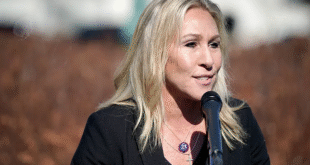House Vote on Trump’s “Big Beautiful Bill” Advances
In a dramatic overnight session on July 3, 2025, the U.S. House vote finally took place on advancing President Trump’s sweeping tax-and-spending legislation—dubbed the “One Big Beautiful Bill.” The procedural vote passed narrowly by 219–213, after hours of tense negotiations and internal conflict within the Republican Party.
Intense Negotiations Shape the House Vote
Facing a razor-thin 220–212 Republican majority, House Speaker Mike Johnson and President Trump personally lobbied holdout GOP members to support the house vote. Conservative hard-liners, including members of the Freedom Caucus like Chip Roy and Ralph Norman, and moderates worried about Medicaid and SNAP cuts, initially threatened to sink the vote. Trump’s social media pressure — warning “MAGA IS NOT HAPPY” — and closed-door meetings, including a prayer session and White House gathering, eventually secured enough defections to pass the rule for debate.
Record-Breaking Marathon Vote
The house vote on procedural rules lasted over seven hours, a record for the chamber. It began late Wednesday evening around 9:30 pm EDT and finally closed in the early hours Thursday morning, as undecided Republican lawmakers returned from travel delays and last-minute talks. The final tally reflected the narrow GOP margin and the intense internal debate it sparked.
Final House Vote Expected Soon
The Senate-passed version, which now awaits House approval, includes extended Trump-era tax cuts, increased funding for defense and immigration enforcement, offset by steep cuts in Medicaid and food assistance. The Congressional Budget Office estimates a $3.3–$3.4 trillion increase to the deficit over the next decade, potentially causing millions to lose health coverage.
GOP Divisions and Democratic Opposition
The House’s narrow Republican majority means that only up to three GOP defections can be tolerated for passage—not including Democrats, who have unanimously vowed to oppose the house vote. Democrats have branded the legislation a “giveaway to billionaires” that compromises social safety nets. Meanwhile, fiscal conservatives continue to complain that the bill doesn’t go far enough in reducing spending.
Implications and Outlook
If the full house vote passes, it would mark a major shift in domestic policy—extending Trump-era tax cuts and initiating significant changes to healthcare and social programs under a new Republican Congress. Reaching the House floor before the July 4 deadline intensifies the political stakes. Even with the procedural vote cleared, the final decision remains uncertain until the concluding Rockefeller-style showdown on the floor.
FAQs
Q1: What was the first House vote about?
A1: The initial house vote was on procedural rules that would allow debate on the full bill. It passed 219–213 after being delayed for over seven hours.
Q2: Who opposed the house vote within the Republican Party?
A2: Key opponents included conservative Freedom Caucus members like Chip Roy and Ralph Norman, and moderates concerned about Medicaid and SNAP cuts.
Q4: What are projected impacts of the bill?
A4: According to the CBO, it would add $3.3–3.4 trillion to the federal deficit over a decade and potentially lead to nearly 12 million people losing health coverage.
Q5: Why is this house vote significant?
A5: It represents a key test of GOP unity, a major shift in tax and spending policy, and a political race to meet the July 4 deadline set by President Trump.




